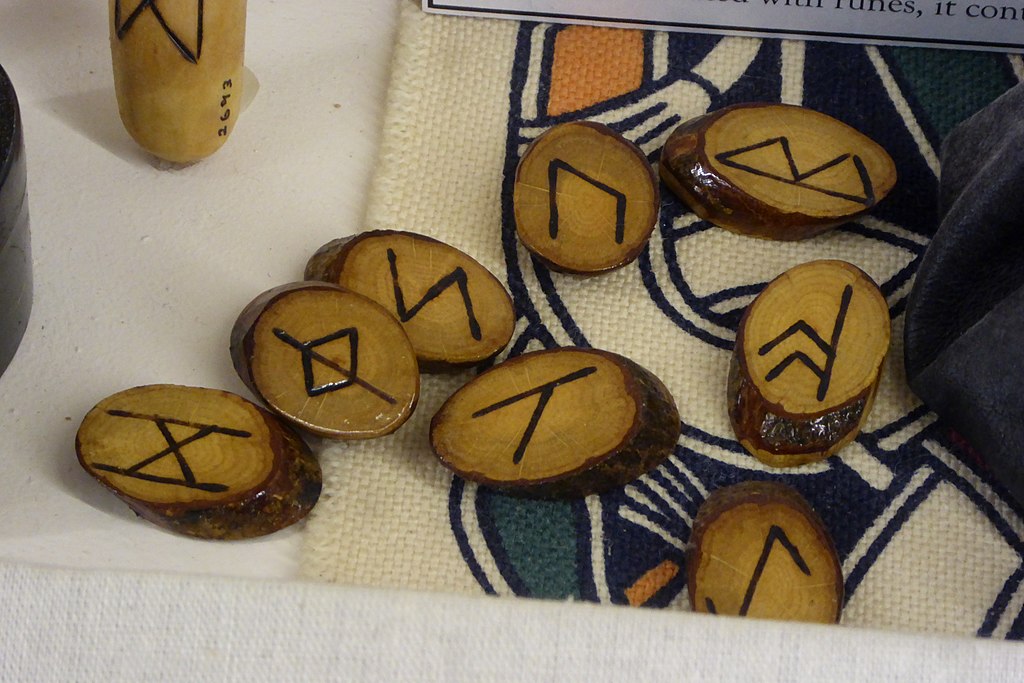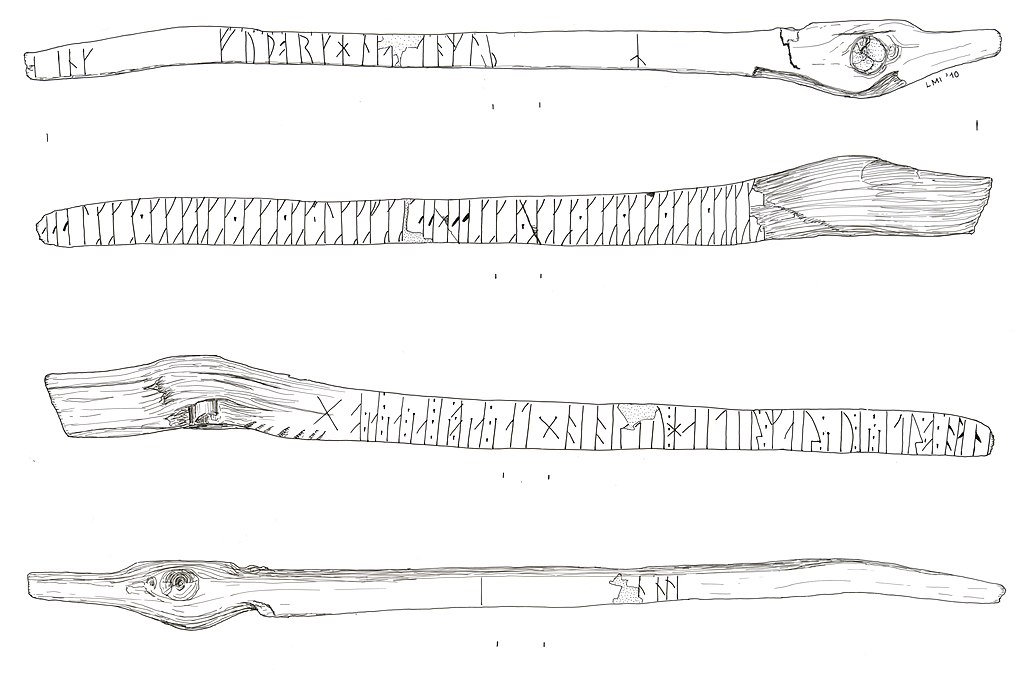Modern Germanic and Norse Vikings used runic symbols in the first and second centuries to speak to the gods and ask for aid, wealth, and love. Think of the magic runes less like modern interpretations of prayers and more like tarot cards.
The runic alphabet, also known as Elder Futhark, was a series of symbols that represented ideas like wealth, health, gifts, and needs (to name just a few).
Quite literally, the Germanic word rún translates to secret or secret language. In the Poetic Edda poem Hávamál, Odin notices the power of the runes carved into the trunk of Yggdrasil and goes to great lengths to undercover the hidden magic of the runes.
The Power of the Magic Runes in Norse Myth
In the Poetic Edda, a poem called Hávamál depicts Odin’s quest to conquer the power of the runes.
Along the trunk of the Tree of Life or Yggdrasil sit the Norns that determine the fate of all living in the nine realms, including the Norse gods of Asgard. In the tree, there are runic inscriptions with magical powers that the Norns use in determining the fate of man and gods. After noticing the runes, Odin decides to learn of their magic power and use it for his own.
So, Odin hangs himself by the branches of the Yggdrasil and pierces himself with his spear. For nine days and nights, Odin peers down into the water below the Well of Urd, waiting for the answers to come.
On the ninth day, he learns the secret of the magical symbols and uses the power of the runes to cast magic spells that heal, aid in battle, and defeat enemies.

Did Vikings Use Rune Magic?
Yes, the Vikings used rune magic in several ways.
While the runic letters were used to communicate with the gods, other times, they were used as a down-to-earth way of communicating with each other.
Remember that the runic alphabet predates Latin in Icelandic and Scandanavian countries. Once Christianity rolled through, many Germanic peoples abandoned their runic alphabet in favor of Latin.
In Egil Skallagrimsson’s Saga (that follows a Viking family between 850 through 1000 A.D), there are quite a few instances when Egil uses rune magic.
In one example, Egil cures a young girl under a curse of evil runes. While this tale demonstrates the importance of runes in healing, it also indicates that not all runes were used for good.
The account of the cursed girl in Egil Skallagrimsson’s Saga demonstrates that rune spells were more than just humble prayers to the gods. In the wrong hands, this spellcasting could be used for evil.

What Was Runic Magic Used For?
Using runes wasn’t just for battle-ready Vikings. Runestones and rune casting were used for various reasons, inside and outside battle.
To learn when runestones were used, we must look to the Sigrdrífumál in the Poetic Edda. This chapter goes in-depth over the use of runestones and magical amulets, detailed by a Valkyrie named Sigrdrífa.
In the Sigrdrífumál, runestones are used for practical magic rather than a means of speaking directly with the gods.
Here are some practical applications of Scandanavian magic, as described by Sigrdrífa:
- Branch Runes. For a healing spell, this rune must be carved into the branches of a tree.
- Victory Runes. These runes were traditionally carved on the hilt of a sword and summoned the aid of Tyr (the patron of warriors).
- Birth Runes. Offer easy and safe childbirth.
- Speech Runes. Support in rhetorical abilities, primarily used by politicians or law speakers.
- Wave Runes. These runes protect sailors, provide safe passage, and fend off life-threatening storms.
Make sure to check out my articles on:
Are Runes Still Used Today?
The runic alphabet was the primary source of communication and incantations for Scandinavian people during the Viking age. However, when Christians landed in Northern Europe in the 12th century, the runic alphabet was slowly replaced with Latin.
While traditional Norse runes fell away, they saw a bit of a revival in the 18th century and beyond with the popularization of fantasy genres (like Lord of the Rings). Today, they are used for more decorative purposes, and some modern Pagans use them in their rituals.
However, the runic alphabet is not entirely lost. Did you know that you likely interact with an old Nordic rune daily?
If you ever wondered what the Bluetooth symbol meant, it’s the use of ancient Nordic runes! It’s composed of the runic symbols H and B, which stand for Harald Bluetooth.

